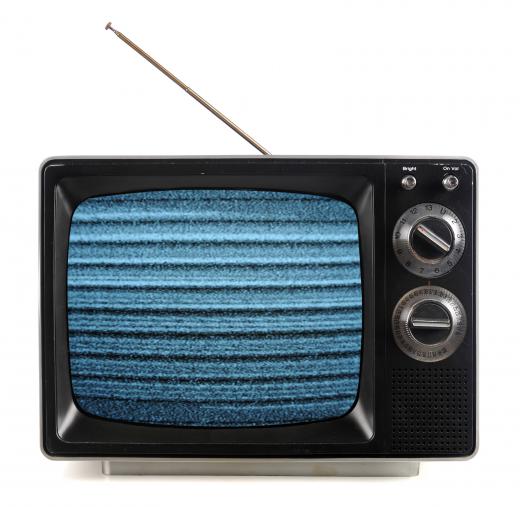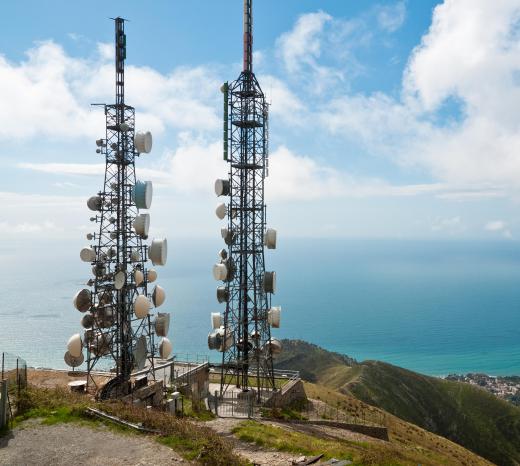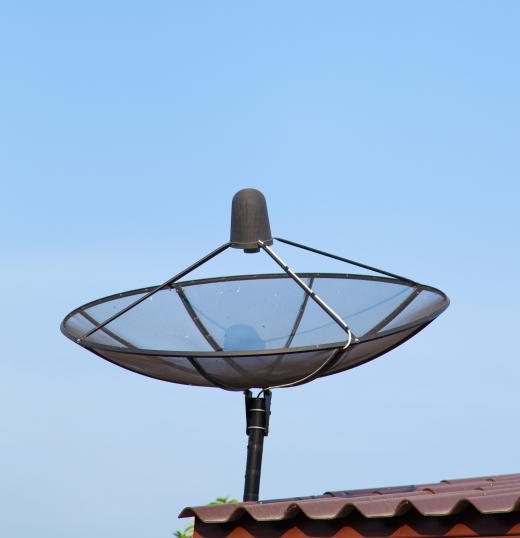What Is Digital TV Frequency?
Digital TV frequency is the specific location on the radio spectrum on which digital TV channels are transmitted. Ordinary analog television channels are received by an antenna searching on a single frequency within the ultra high frequency (UHF) range. The difference between analog TV frequency and digital TV frequency is that the digital signals are compressed into “multiplexes.” These multiplexes each contain numerous television channels — ordinarily around eight — all found on one single frequency. This is why digital frequency requires a special decoder for a television to reproduce the images and audio from the original signal.
Television is transmitted through radio waves, which are collected by antennae and then sent to a television set, which reproduces the signal received as an audio and visual display. Radio waves are basically made up of fluctuations within the electromagnetic field. The specific properties of each fluctuation encode different pieces of information. Static occurs on a television because the leftover radiation from the big bang is all around us, and when not pointed to a particular frequency, the big bang radiation is picked up by antennae. Televisions try to display this like a TV channel, but incomprehensible static is all it produces.

The main difference between digital TV frequency and analog TV frequency is that the digital TV channels are compressed into multiplexes. Digital TV antennae still pick up signals from the radio spectrum in the same way analog TV antennae do, but the information is encoded. These new multiplexes contain the transmission information for several TV channels all compressed into one more efficient signal. This means that when people can’t receive a channel on a digital TV, they are likely to have trouble receiving several channels. These are the channels in the same multiplex as the problem channel.

Old televisions and antennae don’t understand the new digital TV frequency signals, because of the multiplexes. They will try to understand the signal in the same way old analog signals were broadcast, but the information is essentially in a different language. This is essentially like a 12th century time-traveler trying to converse with modern people. Digital TV boxes and televisions with in-built digital receivers are able to understand this new language and translate it into television channels.

Modern digital satellite TV frequency works in basically the same way as digital TV frequency, except that the information is transmitted by a satellite instead of by an earth-bound transmitter. The signal is picked up by a dish, which is shaped like a parabola to focus all of the information received onto one point. Satellite boxes decode this information in the same way that digital boxes do.
AS FEATURED ON:
AS FEATURED ON:













Discussion Comments
@Melonlity -- True, but you can deal with all of that if you have a television that will let you adjust your aspect ratio so you can force those widescreen shows to fit on your 4:3 set. If memory serves, some of those digital to analog adapters will allow you to make those adjustments.
I have had an HD, widescreen set for some time so I haven't had to deal with the problem of making modern broadcasts fit on an old screen. Still, there are a lot of people out there who have to face just that problem and here's hoping they can adjust the aspect ratio and be fine.
There is a real problem with those converters. Simply put, most digital broadcasts are in wide screen format while older television screens are not wide screen. They use that old, "4:3" shape and don't lend themselves to widescreen formats that easily.
Yes, you can get your adapter in place. And, yes, your older programs will look just fine. However, it may be that the widescreen format of newer programming will not fit well on your old, 4:3 television set.
Post your comments